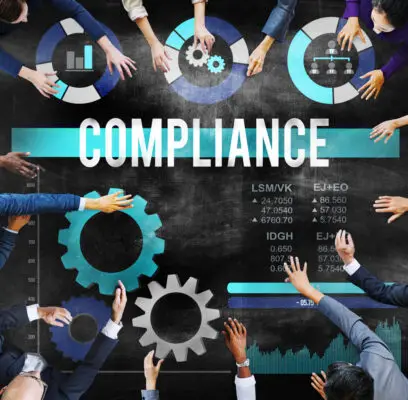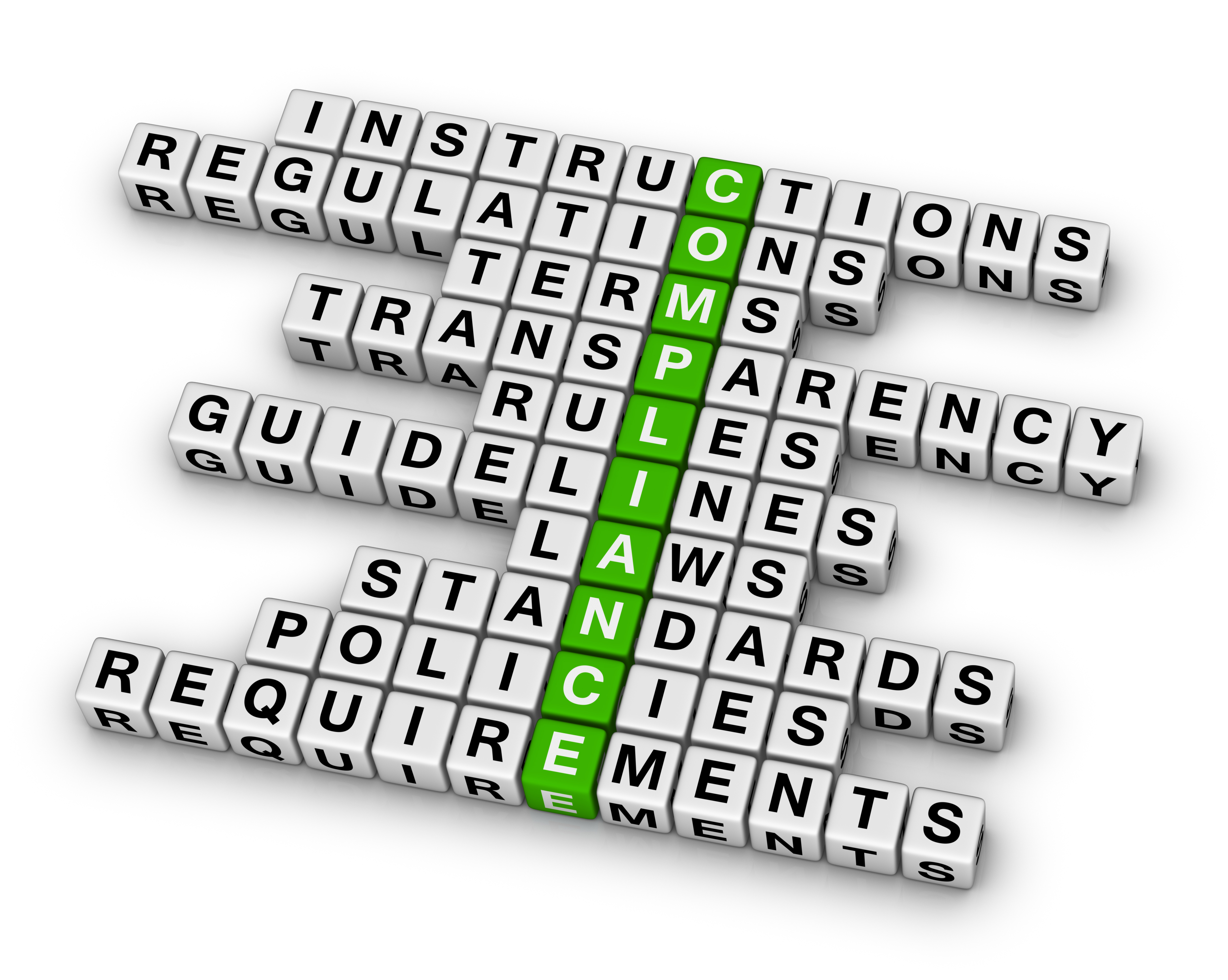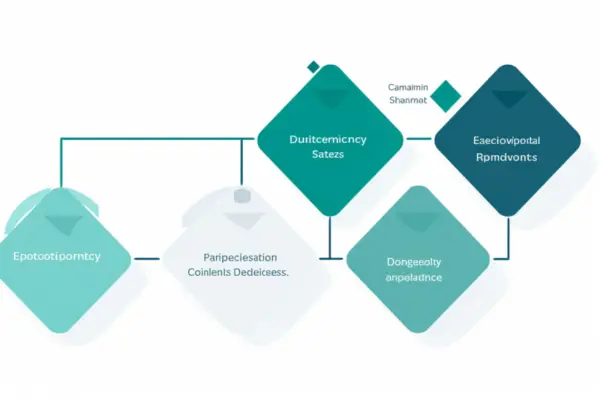Compliance Risk Management is identifying, assessing, managing, and mitigating risks an organization faces due to non-compliance with laws, regulations, standards, or internal policies.
In every industry, organizations are required to comply with certain regulations and standards. These include environmental regulations, financial reporting standards, health and safety guidelines, and data protection laws.
Non-compliance with these regulations can lead to legal penalties, financial loss, and damage to the organization’s reputation.
The Compliance Risk Management process typically involves the following steps:
- Risk Identification: This involves identifying the laws, regulations, and standards the organization must comply with. It also involves identifying the areas where the organization is at risk of non-compliance.
- Risk Assessment: This involves assessing the potential impact and likelihood of non-compliance. This helps in prioritizing compliance risks.
- Risk Mitigation involves developing and implementing controls to prevent or detect non-compliance. This could include training programs, policies, procedures, and monitoring systems.
- Risk Review: This involves regularly reviewing the compliance risks and the effectiveness of the controls. This helps in identifying new risks and improving the controls.
Compliance Risk Management is essential to an organization’s overall risk management strategy. It helps ensure that the organization operates lawfully and ethically, protecting it from legal penalties, financial loss, and reputational damage.
Compliance risk management has become an increasingly important aspect of business operations, particularly within the financial sector, due to the potentially severe consequences of non-compliance with regulations, laws, and standards.
The Australian Prudential Regulation Authority (APRA) has emphasized the need for organizations to prioritize compliance risk management. This involves establishing clearly defined approaches, processes, and accountability measures to ensure the organization complies with regulatory requirements.
This article will explore the concept of compliance risk management in more detail, including the challenges businesses face, the role of automation and technology, and APRA’s oversight and supervision.
Understanding compliance risk management is essential for organizations to operate effectively within the regulatory environment and avoid the costly consequences of non-compliance.

Understanding Compliance Risk
Compliance risk management is a critical concern for businesses in the financial sector, as it involves identifying, reviewing, and monitoring an organization’s compliance risks to ensure compliance with internal and external rules, regulations, laws, and standards.
This will reduce the operational risk of non-compliance within an acceptable threshold set by stakeholders and regulators.
Compliance failures can result in severe financial and reputational damage, including incorrect treatment of customers, failure to meet anti-money laundering obligations, and privacy breaches.
Compliance obligations vary based on the industry and products/services, requiring robust processes to identify and stay up-to-date with regulatory changes.
Effective compliance risk management involves internal controls and mechanisms to help an organization comply with regulations. It is spearheaded by a single department or led by a compliance officer and tends to focus on non-prudential obligations and laws.
APRA supervises and enforces compliance management practices, focusing on prudential standards. APRA’s recent supervision has highlighted the need for entities to have a clearly defined approach, established processes, and clear accountability for managing compliance risk.
Entities face challenges in developing and maintaining a complete view of obligations, but better practice involves a hybrid approach using subscription services and compliance subject matter experts.
Causes of Compliance Risk
Regulatory requirements and legal obligations imposed on organizations can lead to potential breaches and violations, resulting in significant financial and reputational damage.
Compliance risk arises when organizations fail to comply with these regulations and legal obligations. This risk can stem from various causes, including inadequate policies and procedures, lack of awareness of regulatory changes, insufficient training, and failure to identify and address compliance breaches.
Inadequate policies and procedures can lead to compliance risk as they fail to provide clear guidelines on complying with the regulations and legal obligations. This can result in inconsistencies in compliance practices, leading to non-compliance with regulations.
Lack of awareness of regulatory changes can also cause compliance risk, as organizations may not be aware of the changes in regulations and legal obligations that impact their operations. This can lead to non-compliance with new regulations and legal obligations.
Insufficient training and awareness of compliance risks can lead to non-compliance with the regulations and legal obligations. Organizations must ensure their employees are sufficiently trained and aware of compliance risks to avoid compliance breaches.
Failure to identify and address compliance breaches can also cause compliance risk. Organizations must have adequate monitoring and reporting systems to ensure compliance breaches are identified and addressed promptly to avoid potential financial and reputational damage.
APRA’s Supervision and Oversight
APRA’s oversight and supervision of financial institutions in Australia are crucial for maintaining trust and stability in the financial services industry. APRA supervises and enforces compliance management practices, focusing on prudential standards and non-prudential obligations and laws.
APRA currently supervises institutions holding $8.6 trillion in assets for Australian depositors, policyholders and superannuation fund members.
APRA wants entities to give the same attention and prioritization to compliance risk management as they give to cyber and operational risk management. High-profile events and subsequent failures of compliance monitoring practices highlight the importance of strong attention from senior leadership and boards.
APRA will continue closely monitoring entities’ compliance risk management through its supervisory activities.
Better practice for compliance risk management is a key consideration for industry participants and regulators. Evidence has shown that compliance breaches can be extremely costly.
Organizations must identify obligations, conduct risk assessments, set policies and procedures, and report on their efforts to avoid the negative consequences of breaking rules or regulations.
Compliance risk management supports an entity’s operations and enables more meaningful customer interactions.
Three Lines of Accountability Model
The Three Lines of Accountability Model is a framework used to establish clear accountability for compliance risk management within organizations. It divides responsibility across three lines: Line 1, which consists of business functions accountable for managing compliance risk;
Line 2 comprises risk teams that provide oversight and challenge, and Line 3 represents an internal audit that performs independent assurance activity.
Clear accountability is a key focus for APRA’s supervision teams. They emphasize appointing a Chief Compliance Officer to emphasize compliance management and ensure that mechanisms are in place for the voice of compliance to be heard in executive and board discussions.
Fostering a culture of treating compliance risk with utmost importance is important for senior leadership and the board.
The better practice involves creating clear accountability for compliance risk management. Entities must ensure that Line 1 takes accountability, allowing Line 2 to provide effective oversight.
The Three Lines of Accountability Model can help entities establish a structured approach to compliance risk management and ensure that the compliance function reports to senior leadership and the board to present a complete view of obligations compared to the end-to-end process.

Automation and Technology in Risk Management
Automation tools and technology have become essential in the efficient execution of risk management steps, allowing for strategic risk management through the use of analytics and data-driven insights.
Risk management software enables organizations to identify, assess, prioritize, monitor and report on risk management efforts. Automation solutions can help automate business processes and compliance efforts, reducing the risk of human error and increasing efficiency.
Here are three ways in which automation and technology can benefit risk management:
- Improved accuracy: Automation tools can help eliminate errors and inconsistencies in manual processes. This can lead to more accurate risk assessments and better decision-making.
- Increased efficiency: Automation can help streamline risk management processes, reducing the time and resources required to manage risks. This can free up staff to focus on other important tasks and improve productivity.
- Better insights: Risk management technology can provide valuable insights into an organization’s risk profile, allowing for more informed decision-making. Data-driven insights can help identify emerging risks and trends, enabling organizations to proactively mitigate risks before they become major issues.
Automation and technology can play a critical role in effective risk management, helping organizations to identify, assess, and manage risks more efficiently and effectively.
Frequently Asked Questions
What are some common compliance risk management tools and software used by businesses?
Common tools and software used for compliance risk management include automation tools, risk management technology, and risk management software, which allow for the efficient execution of risk management steps, data-driven insights, and automation of compliance efforts.
How can businesses ensure ongoing compliance with ever-changing regulatory requirements?
Businesses can ensure ongoing compliance with ever-changing regulatory requirements by identifying obligations, conducting risk assessments, setting policies and procedures, and reporting on compliance efforts.
Coordination between business units and the compliance function is also important for managing changes to obligations.
What are some best practices for coordinating compliance risk management across multiple jurisdictions?
Best practices for coordinating compliance risk management across multiple jurisdictions include developing a hybrid approach using subscription services and compliance subject matter experts.
Coordinating between business units and compliance functions, and ongoing monitoring to identify and address gaps between business processes and applicable regulations and laws.
How does compliance risk management relate to broader risk management strategies?
Compliance risk management is a component of broader risk management strategies, focusing specifically on an organization’s ability to comply with regulations, laws, and standards.
It aims to reduce the operational risk of non-compliance within an acceptable threshold set by stakeholders and regulators.
What are some potential consequences of failing to manage compliance risk effectively?
Failing to manage compliance risk effectively can result in severe financial and reputational damage to organizations.
Recent high-profile failures have highlighted the importance of giving the same attention and prioritization to compliance risk management as to cyber risk and operational risk management.
Conclusion
Compliance risk management is becoming increasingly important for businesses, particularly those in the financial sector, due to the potential consequences of non-compliance with regulations, laws and standards.
Compliance risk refers to an organization’s ability to comply with these requirements, with compliance risk management being the process of identifying, reviewing and monitoring an organization’s compliance risks.
APRA, the Australian Prudential Regulation Authority, believes compliance risk management should be a top priority within organizations, and has highlighted the need for clearly defined approaches, established processes and clear accountability for managing compliance risk.
One of the main challenges businesses face in managing compliance risks is the complexity of regulations and standards, which can vary across different jurisdictions and industries.
This complexity can make it difficult for organizations to identify and assess their compliance risks and implement effective controls and processes to manage these risks.
Another challenge is balancing compliance requirements with business objectives, as organizations may need to make trade-offs between compliance and profitability.
Automation and technology can play a key role in addressing these challenges, by providing organizations with tools and systems to streamline compliance processes and monitor and manage compliance risks.
This can include the use of data analytics and artificial intelligence to identify potential compliance issues, as well as the implementation of automated controls and processes to reduce the risk of non-compliance.
Compliance risk management is a critical issue for businesses, particularly those in the financial sector, and requires a proactive and comprehensive approach to identify, assess and manage compliance risks.
This involves the establishment of clearly defined approaches and processes, as well as the use of automation and technology to streamline compliance processes and reduce the risk of non-compliance.
With APRA’s oversight and supervision, and a focus on the three lines of the accountability model, organizations can improve their compliance risk management practices and ensure they meet their regulatory obligations.

Chris Ekai is a Risk Management expert with over 10 years of experience in the field. He has a Master’s(MSc) degree in Risk Management from University of Portsmouth and is a CPA and Finance professional. He currently works as a Content Manager at Risk Publishing, writing about Enterprise Risk Management, Business Continuity Management and Project Management.


